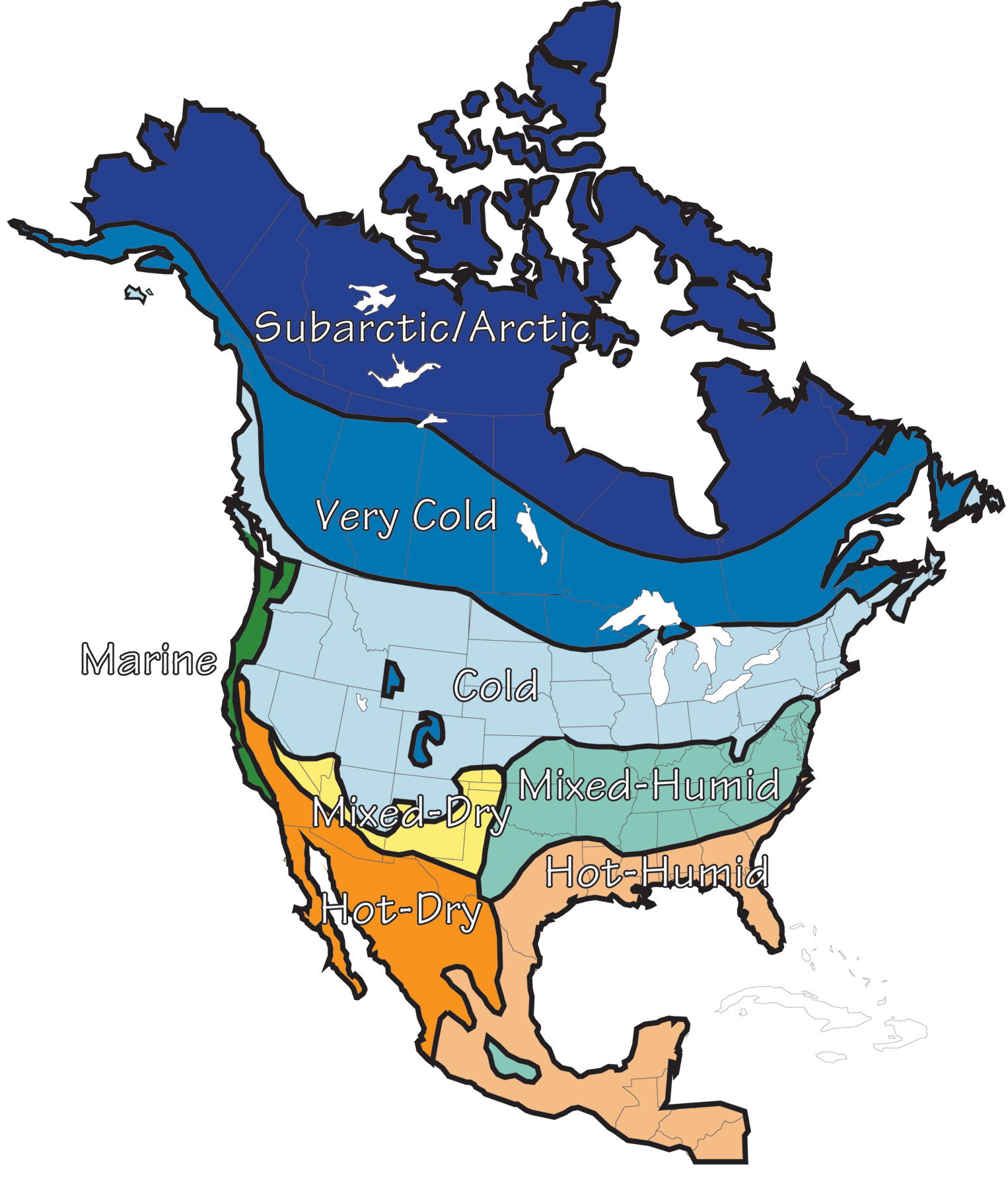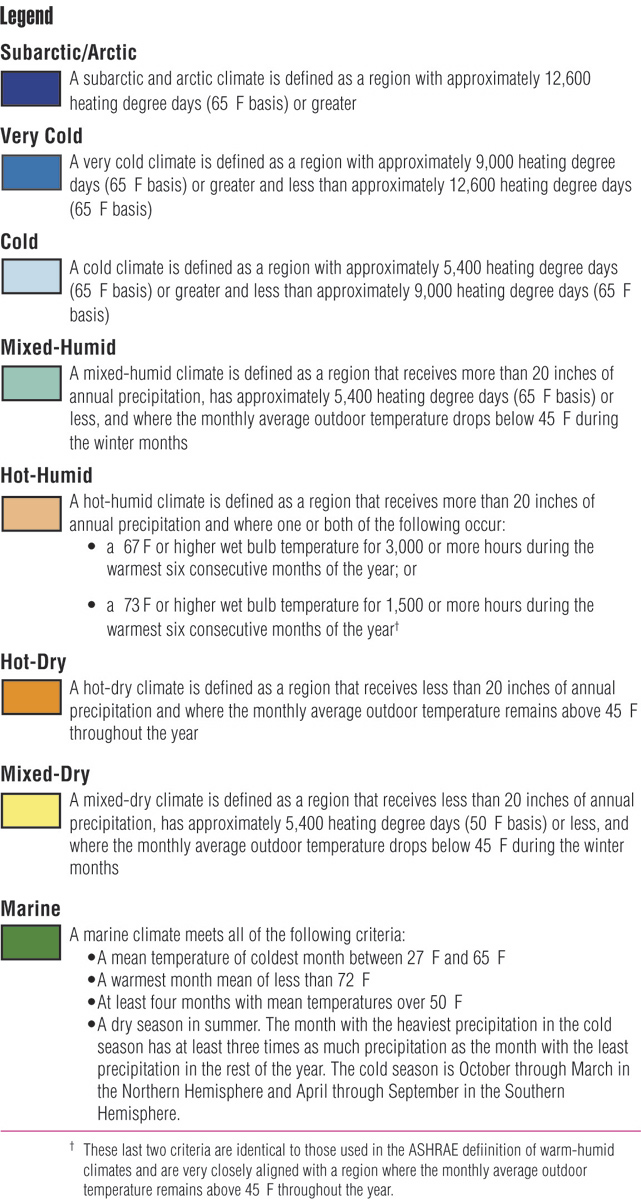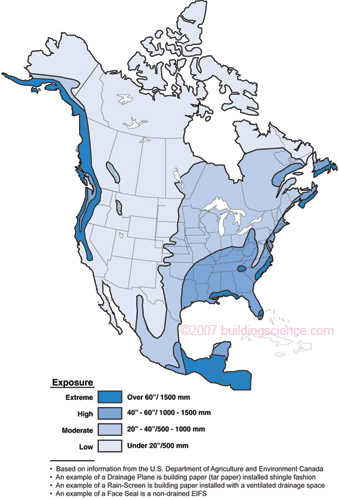When designing a building’s envelope and its interaction with the mechanical system, temperature, humidity, rain, and the interior climate often are ignored. The focus for the building may be more on aesthetics and cost than on performance. This article was first published in ASHRAE Journal, February 2002, pages 36-41. Reprinted with permission.
When designing a building's envelope and its interaction with the mechanical system, temperature, humidity, rain, and the interior climate often are ignored. The focus for the building may be more on aesthetics and cost than on performance.
The concept of limit states (limiting conditions) plays a key role in building durability. In structural engineering, loads and load resistance are considered and limiting states, such as deflection, are specified.
A similar approach is applied to moisture engineering. Rain, temperature, humidity and the interior climate are considered environmental loads with principal limiting conditions such as rot, decay, mold and corrosion. A damage function (damage process) analysis is then used to determine whether a limiting condition, such as mold growth, is achieved.
Moisture engineering uses an iterative and interdisciplinary systems approach to develop performance metrics to meet moisture-related objectives.
Table 1: Interior climate classes
| Class I |
| • Temperature moderated • Vapor pressure uncontrolled • Air pressure uncontrolled |
| Class II |
| • Temperature controlled • Vapor pressure moderated • Air pressure moderated |
| Class III |
| • Temperature controlled • Vapor pressure controlled • Air pressure controlled |
Environmental Loads
Hygro-thermal regions, rain exposure zones and interior climate classes are environmental loads used in applying moisture engineering to building envelopes and mechanical systems. Figure 1 shows hygro-thermal regions and Figure 2 shows rain exposure zones for North America. Table 1 describes interior climate classes.


Figure 1: Hygro-thermal regions in North America

Figure 2: Annual precipiation in Norh America
Moisture Balance
Moisture accumulates in the building envelope when the rate of moisture entry into an assembly exceeds the rate of moisture removal. When moisture accumulation exceeds the ability of the assembly materials to store the moisture without significantly degrading performance or long-term service life, moisture problems result. The moisture storage capacity of a material depends on time, temperature, and material properties.
This moisture storage capacity is significant in determining performance. Consider three examples: a wood frame wall, a steel stud wall and a masonry wall.
In an exterior wood frame wall with a wood-based sheathing, the wood can safely store moisture until the moisture content by weight exceeds 16% (the “surface mold limit for wood”). The equilibrium moisture content of wood exposed to a relative humidity of 80% is 16. In most climates, most wood materials come to equilibrium at around 5% to 6% moisture content by weight. The difference between the surface mold limit and the typical average condition in an exterior wood frame wall is approximately 10% moisture content by weight. In other words, the moisture storage capacity or hygric buffer capacity of most exterior wood frame walls with wood-based sheathings is approximately 10%. If moisture accumulates beyond about 16% by weight, wood surfaces are likely to develop mold.
In the average home approximately 4,000 to 5,000 lbs (1814 to 2267 kg) of wood are in the exterior walls. This yields a hygric buffer capacity of approximately 400 to 500 lbs (181 to 226 kg) of water or approximately 45 to 50 gallons (170 to 189 L). From a performance perspective, the average home can easily accommodate 45 to 50 gallons (170 to 189 L) of water via hygric redistribution. Most water leaks are not a problem because of this large capacity to store water. . .
Download complete document here.
